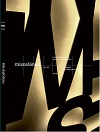Dysarthria and teaching speaking skills in English as a Foreign Language: A case study
DOI:
https://doi.org/10.26754/ojs_misc/mj.20166823Palabras clave:
Inglés como lengua extranjera, trastorno del habla, disartría, evaluaci´ón, destrezas oralesResumen
En este artículo nos centramos en cuestiones relacionadas con el diseño de herramientas de evaluación diagnóstica de las destrezas orales en inglés como lengua extranjera (ILE) para estudiantes con disartria. Con este fin, una estudiante con disartria participó en nuestro estudio. Se desarrollaron test en su lengua materna (español) y en inglés y se analizaron los resultados con el objetivo de (1) presentar distintos tipos de herramientas de evaluación que los profesores pueden utilizar para facilitar la autoevaluación de los estudiantes en ILE, (2) promover la mejora de los logros de los estudiantes con disartria y (3) fomentar el diseño de un plan de implementación conjunta (estudiante / profesor) durante el proceso de aprendizaje.
Descargas
Referencias
Almond, Patricia, Phoebe Winter, Renée Cameto, Michael Russell, Edynn Sato, Jody Clarke-Midura, Chloe Torres, Geneva Haertel, Robert Dolan, Peter Beddow and Sheryl Lazarus. 2010. “Technology-enabled and universally designed assessment: Considering access in measuring the achievement of students with disabilities—A foundation for research”. The Journal of Technology, Learning and Assessment 10 (5). <http://www.jtla.org> Accessed June 5, 2015.
Angelo, Thomas A. 1995. “Reassessing (and defining) assessment”. AAHE Bulletin 48 (3): 7-9.
Darley, Frederic L., Arnold Elvin Aronson and Joe Robert Brown. 1975. Motor Speech Disorders. Philadelphia: W. B. Saunders.
Duffy, Joseph R. 2013. Motor Speech Disorders: Substrates, Differential Diagnosis, and Management. U.S.A.: Ed. Mosby.
Fichten, Catherine S., Vittoria Ferraro, Jennison V. Asuncion, Caroline Chwojka, Maria Barile,
Mai Nguyen and Joan Wolforth. 2009. “Disabilities and e-Learning Problems and Solutions: An Exploratory Study”. Educational
Technology & Society 12 (4): 241-256.
Fuchs, Lynn S. and Douglas Fuchs. 1998. “General educators’ instructional adaptation for students with learning disabilities”. Learning Disability Quarterly 21, 23-33.
Fuchs, Lynn S. and Douglas Fuchs. 2001. “Helping teachers formulate sound test accommodation decisions for students with
learning disabilities”. Learning Disabilities Research and Practice 16 (3): 174-181.
Gunter, Philip L., R. Kenton Denny and Martha L. Venn. 2000. “Modification of instructional materials and procedures for curricular success of students with emotional and behavioral disorders”. Preventing School Failure 44 (3): 116-121.
Hammill, Donald D., James Leigh, Gaye McNutt and Stephen C. Larsen. 1988. “A New Definition of Learning Disabilities”. Learning Disability Quarterly 11 (3): 217-223.
Hansen, Eric G., Robert J. Mislevy, Linda S. Steinberg, Moon Lee and Dougla C. Forer. 2005. “Accessibility of tests for individuals with disabilities within a validity framework”. System 33 (1): 107-133.
Inahara, Minae. 2013. “The rejected voice: towards intersubjectivity in speech language pathology”. Disability & Society, 28(1): 41–53.
Kent, Ray D., Jay F. Kent, John C. Rosenbek and Gary Weismer. 1989. “Toward Phonetic Intelligibility Testing in Dysarthria”. Journal of Speech and Hearing Research 54: 482-499.
Kormos, Judith and Edit H. Kontra (Eds.) 2008. Language Learners with Special Needs: An International Perspective. Clevedon, UK: Multilingual Matters.
Kormos, Judit, and Anne Margaret Smith. 2012. Teaching Foreign Languages to Learners with Specific Learning Differences. Clevedon:
Multilingual Matters.
Moriña, Anabel Cortés, María Dolores and Noelia Melero. 2014. “Inclusive curricula in Spanish higher education? Students with disabilities speak out”. Disability & Society 29 (1): 44–57.
Newman, Lynn A. and Joseph W. Madaus. 2015. “Reported Accommodations and Supports Provided to Secondary and Postsecondary Students with Disabilities National Perspective”. Career Development and Transition for Exceptional Individuals 38 (3): 173-181.
Nganji, Julius T. and Mike Brayshaw. 2014. “Designing and reflecting on disability-aware e-learning systems: the case of ONTODAPS”. 2014 IEEE 14th International Conference on Advanced Learning Technologies. 571-575.
Nijakowska, Joana, Judith Kormos, Svetlana Hanusova, Barbara Jaroszewicz, Borbála Kálmos, Agnes Imrene Sarkadi, Anne Margaret Smith, Elzbieta Szymańska-Czaplak and Nadezda Vojtkova. 2013. DysTEFL - Dyslexia for Teachers of English as a Foreign Language.
Self-study Course. <http://course.dystefl.eu/> Accessed June 23, 2014.
Sireci, Stephen G., Stanley E. Scarpati and Shuhong Li. 2005. “Test accommodations for students with disabilities: An analysis of the
interaction hypothesis”. Review of Educational Research 75 (4): 457- 490.
Wexler, Alice, and Aleánna Luethi-Garrecht. 2015. “Beyond accommodations: Designing for nonverbal/nonauditory learners in the inclusive art room”. Art Education 68 (2): 14-21.
Tools
Cambridge English Pronouncing Dictionary CD-Rom. 2006. 17th Edition. Cambridge University Press: Cambridge.
Die VHS Volkshochschule Quick Placement Test vol. 1. Oxford University Press and University of Cambridge Local Examinations
Syndicate UCLES 2001. <http://www.vhsaschaffenburg.de/documents/5000/Oxford_Test.pdf>
The Oxford 3000. In Oxford Advanced Learner’s Dictionary. 2014. Oxford University Press. <http://oald8.oxfordlearnersdictionaries.com/wordlists>
Descargas
Publicado
Número
Sección
Licencia
Derechos de autor 2016 Miscelánea: A Journal of English and American Studies

Esta obra está bajo una licencia internacional Creative Commons Atribución-NoComercial 4.0.


